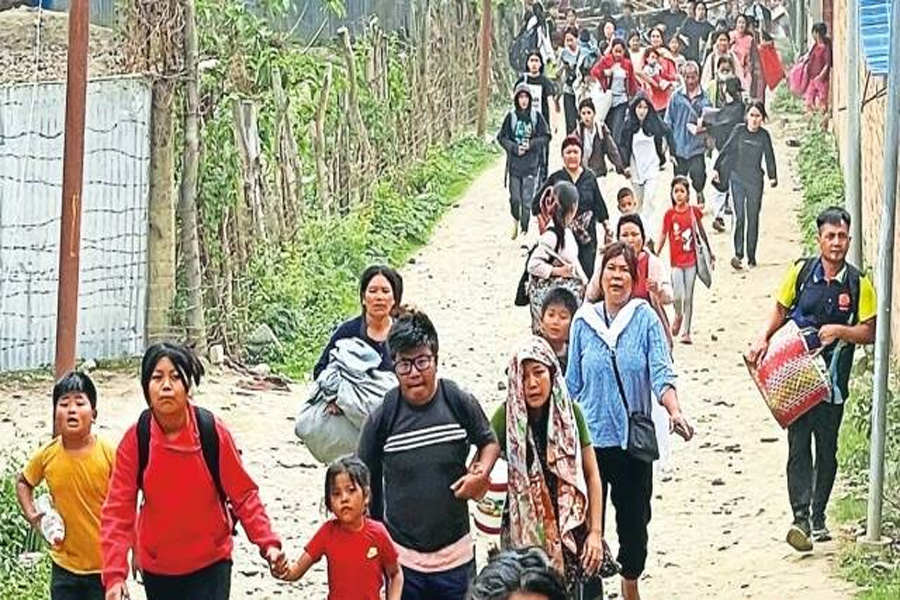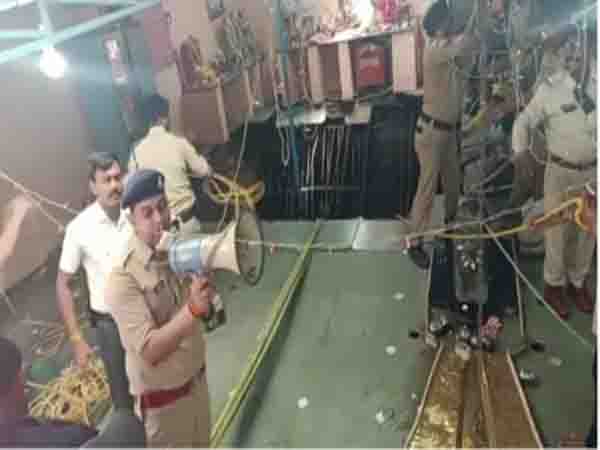Manipur: 7,000 moved to relief centres in worst-hit Churachandpur

A TRAIL of broken glass pieces and torched vehicles —as well as shops with shutters down —along the arterial Tidim Road speak volumes of the unrest Manipur’s Churachandpur town has witnessed since May 3. The road leads to the heart of the town where a poster has been put up. It has a photograph of a nurse, and says: “Martyred for the tribal cause.”
The photograph is of 34-year-old Nhianghoiching, who was among the three people shot dead allegedly by security personnel Friday night as a large group of people gathered on the road to block, what they believed, the evacuation of stranded Meiteis from the Kuki-dominated area in security vehicles.
It was in Churachandpur that violence first erupted during a rally by a tribal students’ group against the Meiteis’ demand for Scheduled Tribe status. The violence soon escalated and spread across the state – largely clashes between the Meitei and Kuki communities – in which at least 52 people were killed. Curfew was clamped in the town, which saw at least 12 deaths, like several other areas of the state.
On Sunday, the curfew was relaxed for a few hours – only the second time since May 3. Although the town has been peaceful since Saturday, when curfew was first relaxed for a few hours in the evening, tension continues as there have been fears of a backlash against the Meiteis, who constitute 53 per cent of Manipur’s population but are in a minority in this district.
According to a senior administrator, around 5,500 people, mostly Meiteis, have been evacuated from their homes in Churachandpur so far. They are currently housed in four relief camps across the district. It is the evacuation of these stranded people, which is now the primary bone of contention and cause of tension in the town.
In Meitei-dominated Imphal, thousands of Kukis are similarly being housed in relief camps across the city.
“The main bargain is that we want the people in Imphal to come back home safely. It’s not that we want the Meiteis here to be hurt, but we don’t want them to be sent back to Imphal till our people are brought back – a mutual exchange. Even if there are rumours of their movement, people will gather on the road,” said D J Haokip, a student leader.
On Saturday evening, civil society organisations met with the district administration over this. “Our negotiation is over the mutual exchange of stranded people that the government needs to expedite. The distance between Churachandpur and Imphal is 64 km and includes the jurisdiction of four district administrations, and the safe passage of our people is the first priority right now,” said Muan Tombing, secretary of Indigenous Tribal Leaders.
The Meitei localities in the town remain deserted, with many of the houses torched.
Robina Laishram (35), a teacher in a government institute, moved to the district administration’s mini secretariat, which is currently functioning as a relief centre, along with her five-month-old baby and younger sister May 4 morning, after spending a tense night.
“We just switched off our lights and stayed put. Some people came to the teaching quarters asking if there were any Meitei people there but the guard helped us and said no. The next morning, I came here with police escort after reaching out through my husband, who is with the SSB,” she said.
Although Robina says the next two nights at the camp were tense as well, with the evacuees aware of their precarious position, she is measured in her words. “We just want the situation to end and the matter resolved. We don’t want any tempers to be provoked on either side so that we can leave safely from here,” she said.
“What is the situation like outside? When can we go home?” asked Donita Naorem (21), a first-year student at Churachandpur Medical College. She has been at the camp since May 3 night, when she says security personnel arrived at their hostel after miscreants set a nearby house on fire.
Volunteers from the Kuki Students’ Organisation (KSO) in the town, while helping Kukis in Imphal find their way to relief centres there, are also providing food supplies to the camp in the administrative complex.
“We are trying to make sure they are safe and well-fed so that there can be peace. If there’s any harm to them, it harms the possibility of the safety of the stranded Kukis in Imphal,” said Gracie, a PhD student and office-bearer of the KSO.
The tension over the question of evacuation is reflected in the road blockades from the beginning of Churachandpur district’s border with the Meitei-dominated Bishnupur district till the town – with rocks, felled trees, burnt vehicles, furniture and tin sheets.
Ginmuan Khuptong (29) said he has been joining other locals every evening on Tidim Road to “maintain vigilance” against possible movements.
Closer to Bishnupur border, there are other tensions. A few kilometres from Torbung, where the violence began on May 3, at Tollen village, locals say men in every household are functioning as “village defence volunteers” against what they say is the fear of attacks from across the border. Some, such as Paojagou Lupho (32), are armed.





